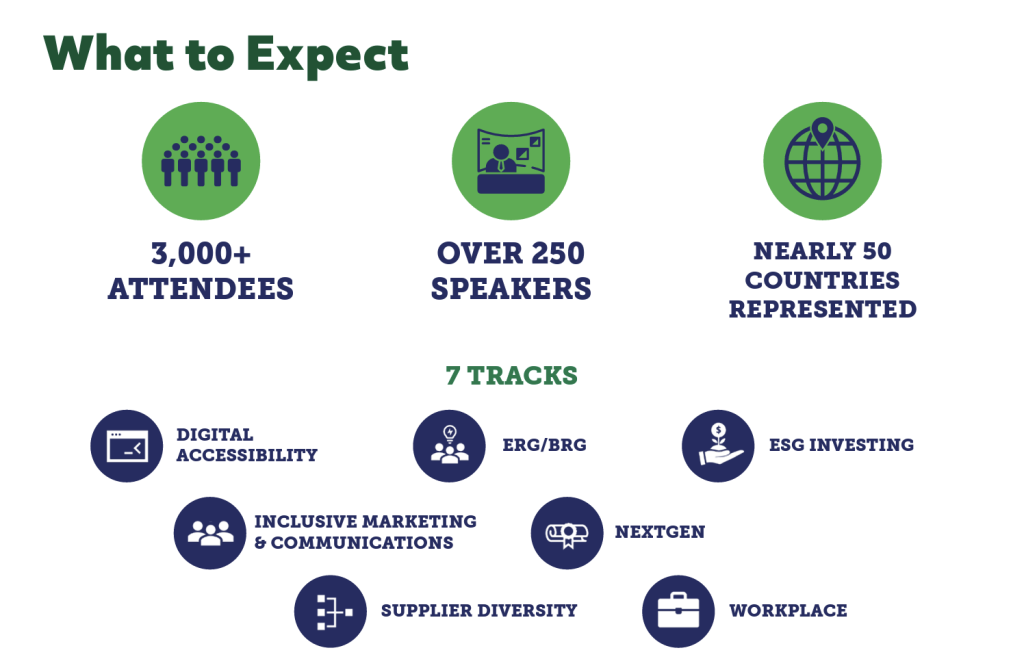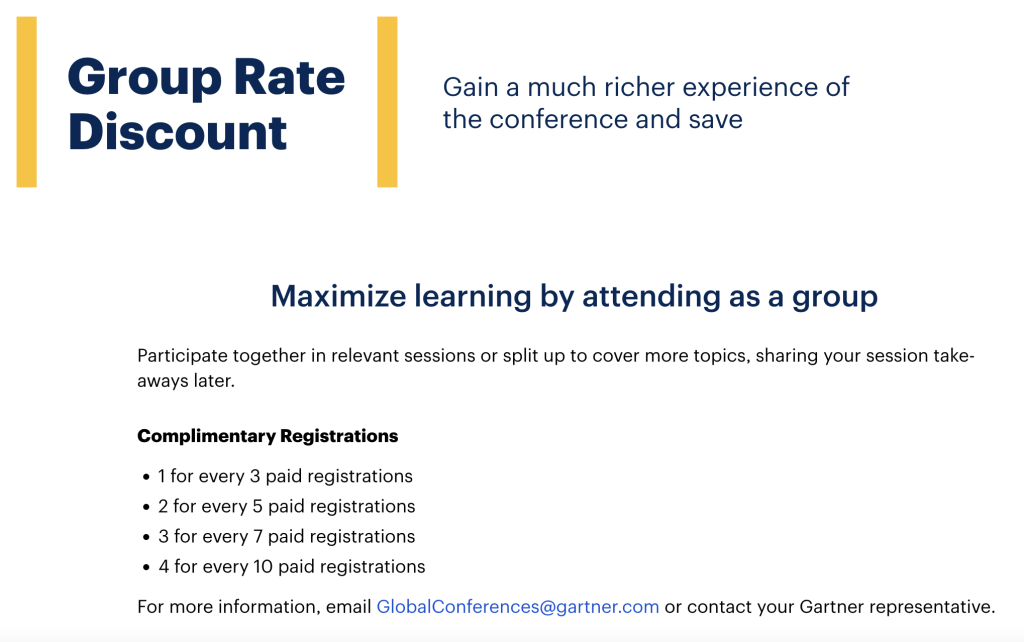Event Marketing: 7 Ways To Help Participants Get Buy-in and Justify Conference Attendance


Though the world has mostly opened up in the wake of the pandemic, event attendance has yet to recover.
According to the Center for Exhibition Industry Research (CEIR), the average event held in Q1 2022 had 32.9% fewer attendees than the average event held in Q1 2019. According to CEIR, this downturn is because of a confluence of factors, including the following:
- Remaining concerns about COVID-19 variants
- Companies tightening their belts in a difficult economy
- The rise of virtual events that are free to attend and don’t require any travel
However, the fact that event attendance may be down doesn’t mean event marketers should assume their next conference or workshop will be sparsely attended. In fact, according to a recent Bizzabo survey, 98% of event organizers plan to host at least 1 in-person event in 2023 and 85% plan to host 3+ in-person events.
The key to getting people to your event? Event marketers should make it possible for would-be participants to justify attendance and get the green light from leadership. Keep reading to learn about seven ideas for helping people justify their event attendance.
7 Ways To Help Participants Justify Event Attendance
If your goal is to ensure as many people experience your events as possible, your event marketing strategy needs to include tactics that make it easy for participants to sell the importance of attending your event to decision-makers. Here are seven ideas for helping attendees get buy-in:
1. Create Content Outlining the Benefits of Attending
One easy way to help your audience justify event attendance is by creating a one-sheeter or brochure that can be quickly consumed by management, highlighting the benefits an employee would experience from going to your event.
Include which companies will be represented, how many speakers and attendees there will be, and what attendees can expect to take away from the experience.
To give you a better idea of what such collateral might look like, check out this conference overview packet from Disability:IN. In addition to creating something as comprehensive as this, you may also want to condense relevant information into a one-sheeter that a busy executive can digest in a minute or two.

Source: Disability:IN
2. Add a Page to Your Event Site Explaining the “Why”
Another way to make it easier for prospective attendees to make the case to upper management is by publishing a persuasive page on your event site that outlines the why. That way, instead of asking a leader to download a PDF or flip through a brochure, employees can simply send them a quick link, which they can browse at their leisure.
To better understand what such a page might look like, check out this INBOUND site from a few years ago.
3. Offer Event Justification Email Templates for Attendees
Put together a template that folks can customize and use to convince their bosses that they should attend your event. Be sure to include ideas for how they can really sell it, such as that they’ll create a post-event takeaways report or generate X new contacts and connections at key companies. To give you a starting point, here’s an outline of what your event template might look like:
Hi [FIRST NAME],
I’m writing to let you know that I’d like to attend [EVENT NAME], which will be held [DATES] in [LOCATION]. This event explores [SUBJECT MATTER], and I know that if I attend I will develop new skills, make new connections, and learn new things that will help me become a more effective contributor to our company.
Here’s some info about the event:
1. The event will include [NUMBER] sessions featuring speakers from amazing companies, including [COMPANY], [COMPANY], and [COMPANY].
2. Last year, the event brought more than [NUMBER] people from around the world together, and this year’s event is shaping up to be the best one yet!
3. The cost to attend is [AMOUNT], and I’m also asking for support covering [HOTEL, TRAVEL, ETC].
While attending the event, I hope to achieve [GOAL]. I will make sure I set time aside to be available while I’m at the event and communicate to the team, so nothing should fall through the cracks. I’ll also be sure to create a post-event learnings report to share with the team so everyone can benefit from my attendance.
Thanks for your time and support. Let me know what you think!
[FIRST NAME]
4. Ensure Equitable and Reasonable Event Fees
In today’s challenging economic environment, it comes as no surprise that some decision-makers are deciding to tighten the company purse strings.
One way to mitigate this concern is by offering discounts when multiple people from the same company register for your event. For example, the Energy Psychology Conference offers a 10% discount for groups of five or more. Similarly, Gartner often offers discounts for its events (e.g., one free registration for every three paid registrations and four free registrations for every 10).

Source: Gartner
In addition to offering discounts, you should also ensure your ticket prices are reasonable in the first place. By offering different pricing tiers, early-bird discounts, and other promotions, you can increase the chances prospective attendees can find a ticket that fits within their budget. You also open your event up to more diverse attendees, which gives a boost to your equity and inclusion strategy.
5. Offer Virtual or Satellite Options To Make the Ask Easier (and Cheaper)
Instead of putting all your eggs in one basket and scheduling your event at a single location, consider offering virtual or satellite events that give attendees more ways to participate. While a budget-conscious boss might not be keen on paying for an employee to travel to the other side of the country, they might have no problem allowing that person to attend a smaller event in their own city.
6. Focus on the Importance of Professional Development
Ultimately, conferences and events are opportunities for professional development. Another way to increase the chances folks can attend your event is by creating content that highlights the importance of professional development.
According to a recent survey by The Conference Board, 66% of millennials and 63% of Gen Xers say they would likely leave their company if professional development or continuing education and career training — to help develop new skills, stay up to date on current trends, and drive career advancement — aren’t on the table.
A decision-maker might have a change of heart based on these statistics and decide to fund a trip after all — particularly in today’s employee-driven labor market.
7. Create Post-event Content With Key Takeaways
Convincing the boss that you need to go to an event this year is one thing. But what about next year?
To encourage repeat attendance and help attendees prove ROI, create content that outlines key takeaways and highlights some of the more memorable parts of your event. Attendees can then share that content with upper management and colleagues, making it that much more likely they’ll get the OK to participate next year as well. Not only does this make your attendees’ lives easier because they get a ready-made asset to prove ROI, but it also means you’ve got a solid piece of post-event content to distribute across channels; it’s a win-win!
Bonus: Cost-saving Tips To Justify Event Attendance
Although these tactics can help employees convince their bosses to let them attend an event, many prospective attendees will still get a disappointing “no.” With businesses cutting travel budgets by as much as 25%, attendees may be able to make a more persuasive case by thinking outside the box and trying to cut costs to make the trip as cheap as possible.
To this end, event marketers should consider sharing cost-saving tips with prospective attendees when and where necessary, including the following:
- Book a hotel with a colleague or stay with friends/family to keep lodging expenses in check
- Offer to take a train or drive instead of flying (assuming those methods are cheaper)
- Book a lower-quality hotel to lock in cheaper rates (e.g., a 3-star instead of a 4- or 5-star hotel)
- Request a smaller per diem or cover meal costs out of pocket
Ensuring your next in-person event is well-attended is the beginning of the event marketer’s journey. Want to knock your next IRL event out of the park? Download our In-person Event Production Kit.
